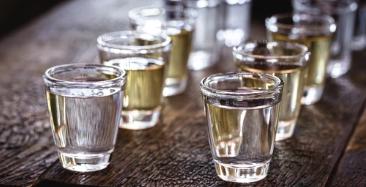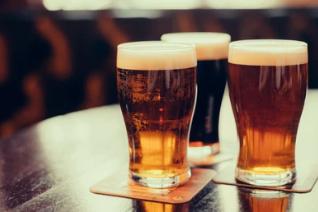Physical and chemical indicators are important elements in wine testing and have considerable significance in wine production. Lifeasible provides high-precision instruments to help customers test the quality of their wines. Our services are designed to make wine quality identification more scientific.
As one of the leading wine testing providers, Lifeasible offers comprehensive solutions for general testing in wine, including sensory testing, moisture, pH, and net content. In addition, Lifeasible offers other physical and chemical testing solutions for wine. Our labs will provide reliable analytical results in strict compliance with international standards.
Below are our other physical and chemical testing solutions for wine. Customers can choose any of the items or combinations as desired.

Dry leachate in wine is the sum of non-volatile substances in wine under certain physical conditions, mainly fixed acids (tartaric, malic, lactic, etc.) and their metal salts (such as potassium, calcium, etc., sugars (arabinose, glucose, fructose, etc.), tannins, pigments, pectins, minerals, etc.
The index of dry extract in wine reflects the content of grape juice, which is closely related to the raw materials of wine, the production process, and the storage method of wine. The dry extract is an essential basis for judging whether the wine is purely brewed and whether it has been blended, and it is one of the important signs reflecting the quality of the wine.
Lifeasible provides standard methods to test the dry extract content of wine, including the density bottle method, gas chromatography method, and alcohol meter method. The dry leachate content is the total leachate content minus the sugar content, and the total leachate can be measured by measuring the density of the de-alcoholized sample.

Liquor solids are divided into two categories: insoluble solids and soluble solids, which are the non-volatile substances left in the evaporation dish after the evaporation and drying of white wine, including non-volatile substances at this temperature. The main components are salts, mainly due to the oxidation of metals in the storage container into metal oxides in an acidic environment and the reaction of metal oxides with organic acids in white wine to produce organic salts. Improper storage conditions and illegal manufacturers' improper use of additives and other operations can cause solids to exceed the standard, which is harmful to the body.
Liquor solids exceeding the standard will cause loss of luster, turbidity, and precipitation in liquor, which will affect product quality. As an important quality index in liquor standards, solid content directly determines the quality of liquor from the senses.
Lifeasible provides a standard test method and a liquor solids content analyzer to detect the solids content in liquor.

Beer foam refers to the flower of beer, which is derived from carbon dioxide, effervescent protein, isoxazone, and the viscosity of beer itself. The foam performance of beer usually includes three aspects: foamability, foam retention, and adhesion. The proteins, carbohydrates, and hop bitter substances contained in beer undergo slight changes during the brewing process and remain in the beer as a complex. These components determine the aroma, body, and foam of beer.
The finer the beer foam, the better the cup-hanging ability. The cup-hanging ability of beer foam is also an important sign to distinguish beer quality.
Lifeasible provides a standard test method (stopwatch method) and a beer foam tester to detect beer foam. In addition, we provide enzyme-linked immunosorbent assay (ELISA) for detecting beer foam proteins and mass spectrometry for identifying beer foam proteins.
Our other wine physical and chemical testing solutions offer excellent reproducibility and accuracy for different types of wine, and the results are fully compliant with standards. If you are interested in our solutions, please contact us for technical consultation and quotation.